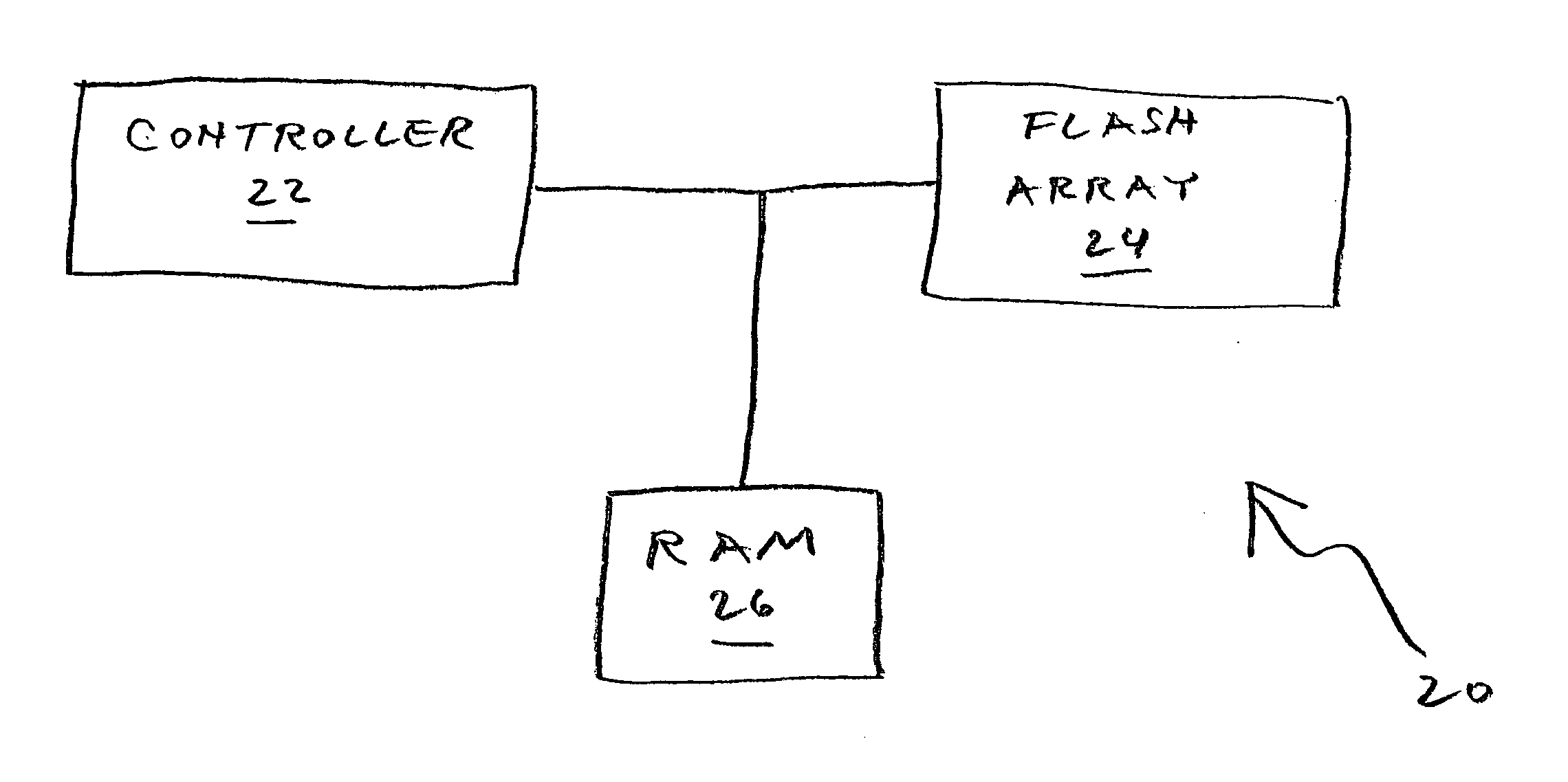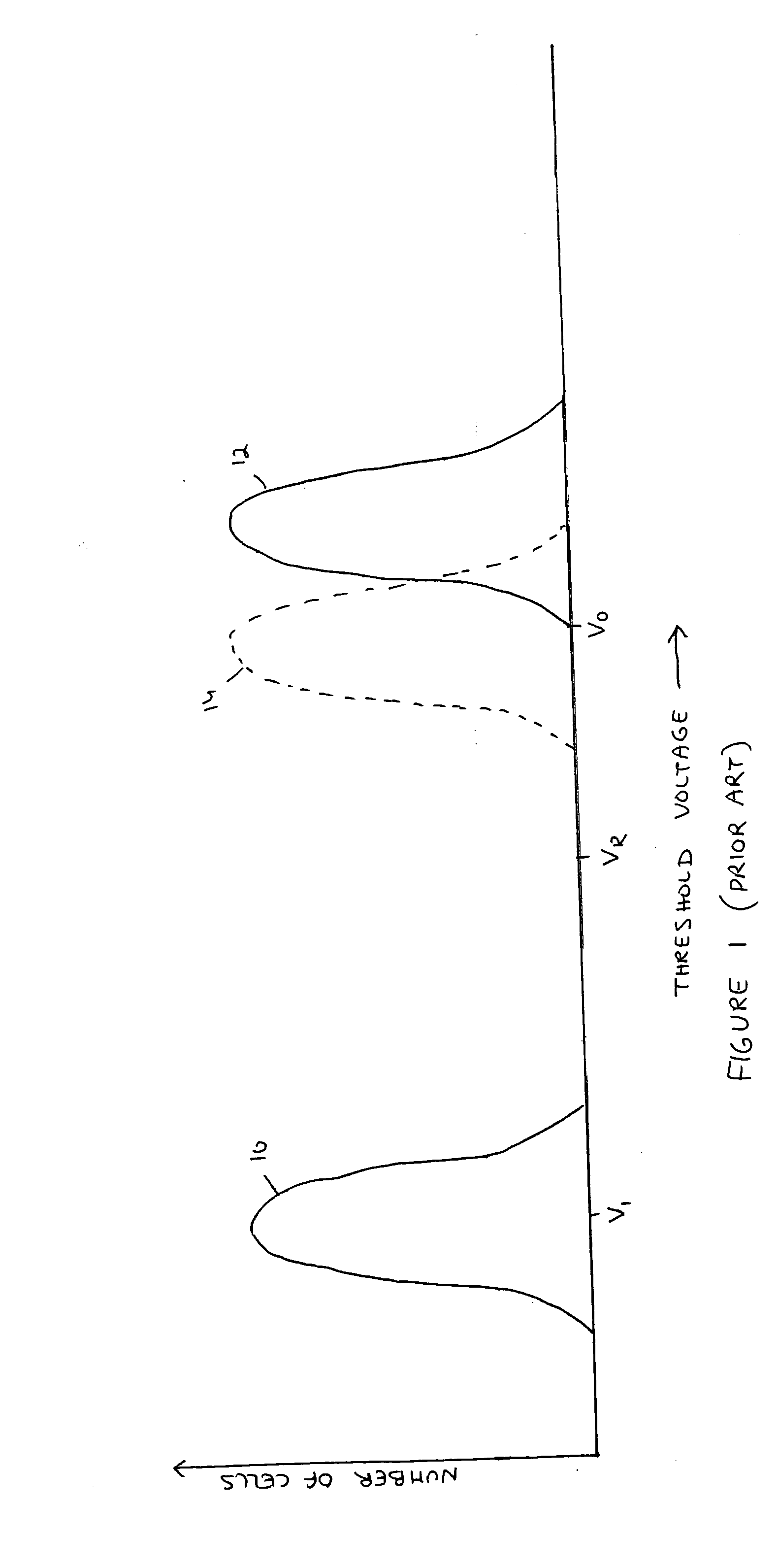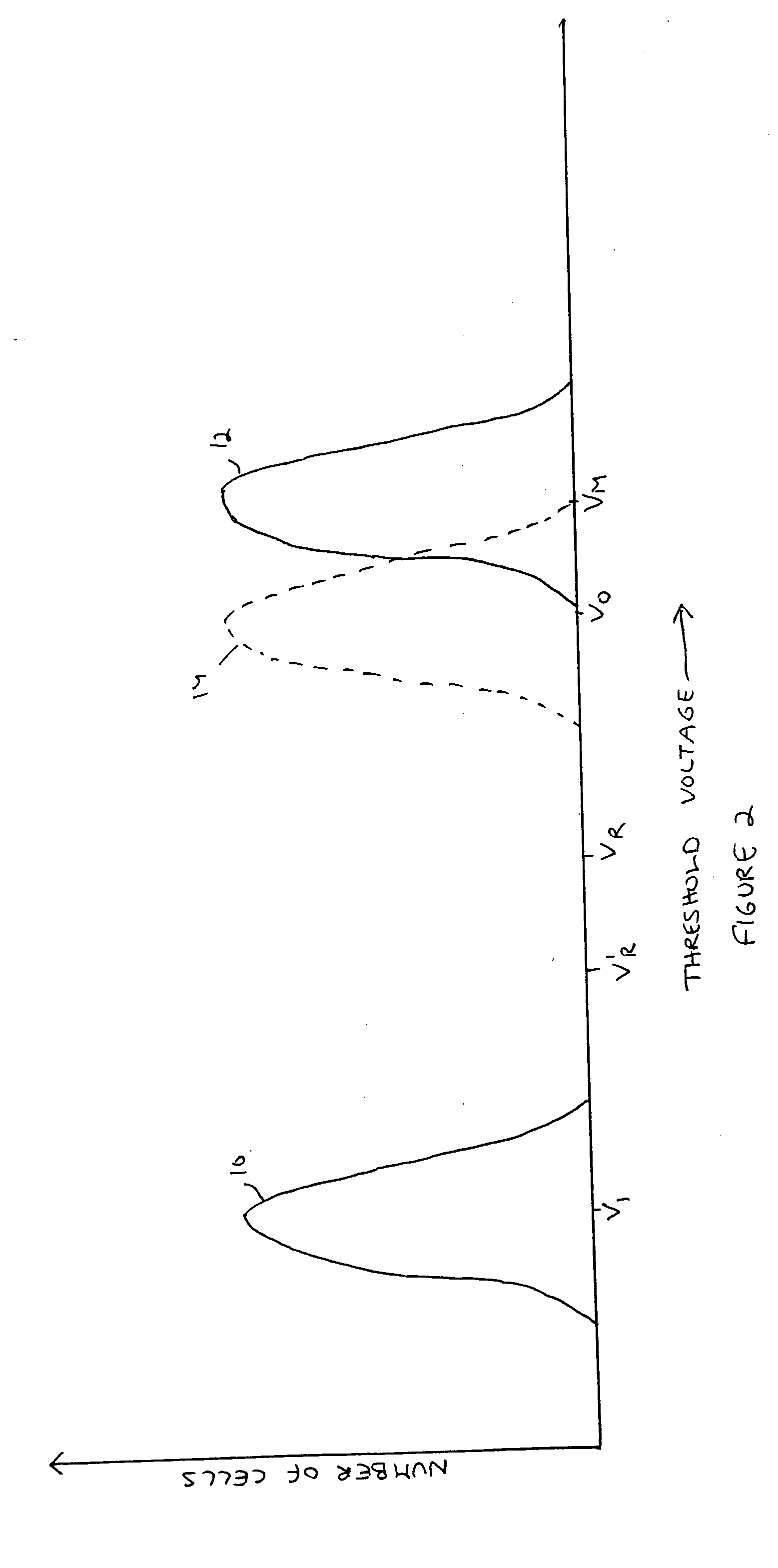Drift compensation in a flash memory
- Summary
- Abstract
- Description
- Claims
- Application Information
AI Technical Summary
Benefits of technology
Problems solved by technology
Method used
Image
Examples
example 1
A Model that Depends on the Number of P / E Cycles but Not On the data Retention Time
[0041] This model is linear in the number of P / E cycles. For a block of a MLC flash memory device, the model is
Estimated_drift=P / E_coefficient*Band_number_coefficient*P / E_count+P / E_initial_offset.
where P / E_coefficient is an empirically determined coefficient that applies to all the threshold voltage bands of the MLCs, Band_number_coefficient is an empirically determined coefficient that applies to a particular threshold voltage band (higher voltage bands are expected to drift more over time than lower voltage bands), P / E_count is the number of P / E cycles that the block has endured, P / E_initial_offset is an empirically determined constant offset and Estimated_drift is the amount by which the lower end of the band's threshold voltage distribution is estimated to drift downward. For example, if P / E_coefficient has been determined empirically to be 1.6×10−5V / cycle, if Band_number_coefficient for a part...
example 2
A Model that Depends on Data Retention Time but Not On the Number of P / E Cycles
[0043] The model is linear in the data retention time. For a page of a MLC NAND flash memory device, the model is
Estimated_drift=Data_retention_coefficient*Band_number_coefficient*Time_since_programmed+Data_retention_initial_offset.
where Data_retention_coefficient is an empirically determined coefficient that applies to all the threshold voltage bands of the MLCs, Band_number_coefficient is an empirically determined coefficient that applies to a particular threshold voltage band, Time_since_programmed is the time that has elapsed since the page was programmed, Data_retention_initial_offset is an empirically determined constant offset and Estimated_drift is the amount by which the lower end of the band's threshold voltage distribution is estimated to drift downward. For example, if Data_retention_coefficient has been determined empirically to be 0.08V / yr, if Band_number_coefficient for a particular band...
PUM
 Login to View More
Login to View More Abstract
Description
Claims
Application Information
 Login to View More
Login to View More - R&D
- Intellectual Property
- Life Sciences
- Materials
- Tech Scout
- Unparalleled Data Quality
- Higher Quality Content
- 60% Fewer Hallucinations
Browse by: Latest US Patents, China's latest patents, Technical Efficacy Thesaurus, Application Domain, Technology Topic, Popular Technical Reports.
© 2025 PatSnap. All rights reserved.Legal|Privacy policy|Modern Slavery Act Transparency Statement|Sitemap|About US| Contact US: help@patsnap.com



